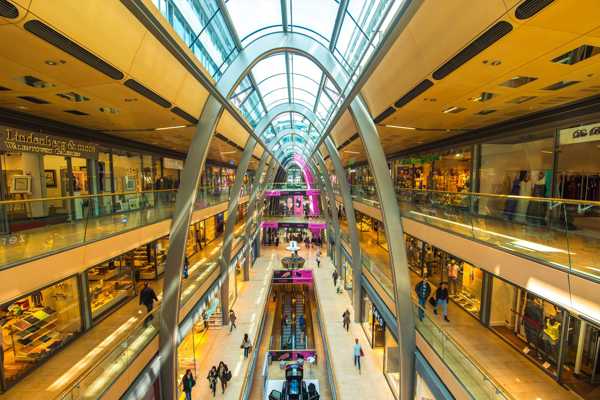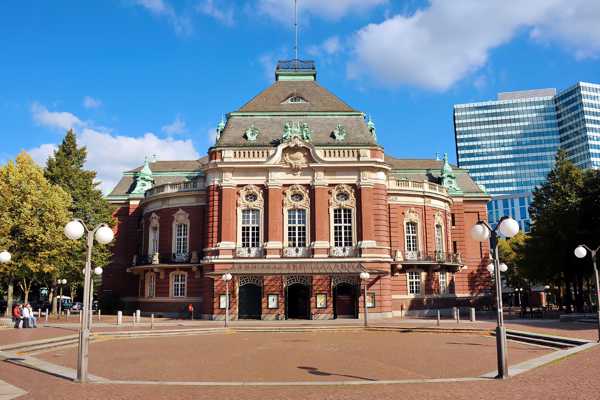Strolling along Hamburg’s popular streets, cobblestone walkways, and sidewalks is an exciting way to explore the second largest city in Germany. Hamburg, a seaport city, lies at the head of the Elbe River and has a rich and diverse maritime history. It is now an essential transportation hub, a flourishing cultural and commercial centre, and a vibrant destination spot for visitors.
Explore Hamburg’s streets and see what its thoroughfares can tell us about its historic and tumultuous past and its present prosperity. After all, the best way to experience cities is to walk through the streets. it’s an amazing way to taste the local flavour of a city and see how the locals live.
- 1
Deichstrasse
Hamburg’s oldest street

- Lavt budget
- Historie
- Billeder
- Shopping
Deichstrasse, dating back to the 14th century and located right next to the Nikolaifleet canal, is one of a few streets that survived the Great Fire in 1842. The merchant homes are characteristic of what the area – and much of Hamburg – looked like in the 17th century. The timber-framed houses have been painstakingly restored and are excellent architectural examples of old Hamburg.
Today, Deichstrasse – known as Dyke Street in English – is a delightful street to wander down. Besides seeing the merchants' row, there are many boutiques, traditional restaurants, and coffee shops. Grab a cup of coffee and a window or sidewalk seat and enjoy the sights.
Adresse: Deichstrasse, Hamburg, Germany
Kort - 2
Reeperbahn
Nightclubs and bars line this lively boulevard

- Historie
- Natteliv
- Billeder
Reeperbahn, with its moniker, the most sinful mile (die sündigste Meile), is the main thoroughfare and centre of St. Pauli’s decadent red-light district. This long street is packed with bars, clubs, restaurants and entertainment, including cabarets, theatres and art galleries. It is home to one of the largest club galas, the Reeperbahn Festival.
Not to miss are the Panoptikum wax museum (the oldest in Germany), the Beatles-Platz, a tribute to the Beatles, who performed 281 concerts here in the early 60s, and Hans-Albers-Platz, honouring the actor and singer Hans Alberts. A famed son of Hamburg, Alberts acted and sang between 1930 and 1960. He even wrote a song about this infamous street called On the Reeperbahn at Half Past Midnight.
Adresse: Reeperbahn, Hamburg, Germany
KortBillede taget af Jorge Franganillo (CC BY 2.0) Redigeret
- 3
Bäckerbreitergang
Get a glimpse of an authentic working-class street in Hamburg

- Lavt budget
- Historie
Bäckerbreitergang is a narrow, cobbled alley and is noteworthy as an example of where Hamburg’s working class lived in the 18th and 19th centuries. These simple structures, called half-timbered houses, were built right next to each other and lined these small, winding streets. They now give visitors a realistic look at lower-class homes.
Homes No. 49 through 58 are among the few remaining examples of this type of housing from this period. Most notable is the tight placement of the small living quarters and the width of the street, which represents how narrow these walkways actually were. Many of these apartments could often only be reached through narrow corridors between the homes or through backyards.
Adresse: Bäckerbreitergang, Hamburg, Germany
KortBillede taget af Bernhard Diener (CC BY-SA 4.0) Redigeret
- 4
Grosse Bleichen
An upscale shopping experience

- Par
- Luksus
- Shopping
Wander along Grosse Bleichen in the Neustadt quarter of Hamburg for exclusive and luxe shopping. Grosse Bleichen, with its many designer stores and speciality boutiques that feature haute couture, jewellery, custom-made shoes, and designer household items, runs parallel to Neuer Wall, another posh street. There are also 5 malls in the area, and shopping here is quite possibly the most exclusive (and expensive) in all of Hamburg.
If shopping is your thing, this is where you need to be. You can also window-shop or stroll and take in all the sights and sounds. Be sure to make time to linger in one of the many excellent restaurants and enjoy a drink or meal between shop visits.
Adresse: Grosse Bleichen, Hamburg, Germany
KortBillede taget af AltSylt (CC BY-SA 4.0) Redigeret
- 5
Reimerstwiete
A quiet, historical, residential area where you can wander at leisure

- Lavt budget
- Historie
- Billeder
Reimerstwiete is a historical area in Hamburg closed off from traffic – you can freely meander the cobblestone pathways and leisurely view the red brick buildings and the tall half-timbered houses. Structures No. 17 through 21 are restored architectural examples of former structures from the 18th century. It’s worth noting that these old buildings connected the 2 main streets of Cremon Island, which has been inhabited since the 13th century.
What exactly is a half-timber house? This style of building became popular between the 15th and 17th centuries. Timber was plentiful at the time, and innovative woodworkers used it to make inner and outer wood frames and filled spaces with brick, plaster, or any other handy material to complete the structure.
Adresse: Reimerstwiete, Hamburg, Germany
Kort - 6
Peterstrasse
Beautifully rendered house reproductions of bygone eras

- Familier
- Historie
- Billeder
Peterstrasse, and the structures that occupy it, were built after WWII as a way to bring the past to the present. The buildings are replicas of bourgeois houses and homes that were built in Hamburg between 1610 and 1780. It’s a lovely street to walk and takes you back in time. The attention to detail in the reconstruction is phenomenal.
There are many noteworthy reproductions, the most famous being No. 39, the home of composer Johannes Brahms. It’s now a museum featuring Brahms’ musical works, concert programmes, artefacts, and photographs. The museum is part of a collective called the Composers Quarter – a group of 6 museums that honour famous composers.
Adresse: Peterstrasse, Hamburg, Germany
Kort - 7
Kirchenstrasse
Explore the church grounds and learn some local history

- Lavt budget
- Par
- Historie
Trek on over to Kirchenstrasse and explore Trinity Church, also called St George’s Church, built in 1747. It was destroyed by bombs during WWII in 1943 and rebuilt in 1957. The west wall is the only surviving part of the original structure. A walk around the lush grounds is relaxing and the ambience is tranquil.
If you happen to sit down for reflection, consider that since the 11th century, there has been a chapel or religious structure located here, right beneath your feet. If you tour the main church, several fixtures date back to the 13th century, including the crucifix that was carved from solid oak.
Adresse: Kirchenstrasse, Hamburg, Germany
KortBillede taget af Pauli-Pirat (CC BY-SA 4.0) Redigeret
- 8
Lämmertwiete
No matter when you visit this lane, you’ll find it abuzz with activity

- Par
- Mad
- Natteliv
Head to Lämmertwiete when you are ready to find a local pub or restaurant where you can let your hair down and relax. Along this cobblestone street, you can sit in the shadow of the famous half-timbered homes, sip a beer, grab some local cuisine and feel like a local. This small street with a rustic and welcoming ambience draws visitors and residents alike.
Lämmertwiete is in the borough of Harburg, known for Binnenhafen, or the inner port, and is situated on the south bank of the Elbe River. Harburg is also the site of an annual festival, Harburger Binnenhafenfest, celebrating Hamburg’s rich maritime culture and history.
Adresse: Lämmertwiete, Hamburg, Germany
KortBillede taget af Staro1 (CC BY-SA 3.0) Redigeret
- 9
Marktstrasse
Where the cool kids hangout in Hamburg

- Mad
- Natteliv
- Shopping
Marktstrasse is a well-known street in an area known as Karolinenviertel or Karoviertel, a vibrant and trendy area where students, musicians, and artists gather. Karoviertel is very urban and densely populated. The diverse population in the enclave has an edge that brings a certain flair and energy that is palatable. If there is a focal point in the neighbourhood, it’s Marktstrasse.
Reasons to visit Marktstrasse include a thriving local art and music scene, shops that feature second-hand items (records and antiques), up-and-coming artists and designers, art galleries, tattoo shops, bars and eateries. The food scene here runs the gamut from healthy and sustainable to ethnic cuisine and local fare.
Adresse: Marktstrasse, Hamburg, Germany
Kort - 10
Grosse Freiheit
An entire street that becomes one big extravaganza every night

- Historie
- Natteliv
Grosse Freiheit, which translates to 'Great Freedom', is a street that lives up to its name. The name originated in 1610 when religious and commercial freedoms were granted to the proletariat. And since then, it has seen its share of colourful (and unholy) history. Hamburg native, actor Hans Alber, in the 1940s, started in the movie Grosse Freiheit Nr. 7 featuring the infamous street. Also, the teen band, The Beatles, performed in venues multiple times in the 60s, just before they burst onto the world stage.
Today, Grosse Freiheit is a busy (and buzzy) cross street to Reeperbahn in the red-light district of St. Pauli quarter – the legendary party hub of Hamburg nightlife.
Adresse: Große Freiheit, Hamburg, Germany
KortBillede taget af IK's World Trip (CC BY 2.0) Redigeret



















